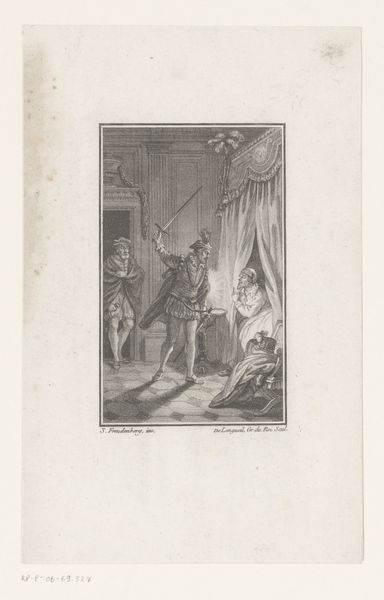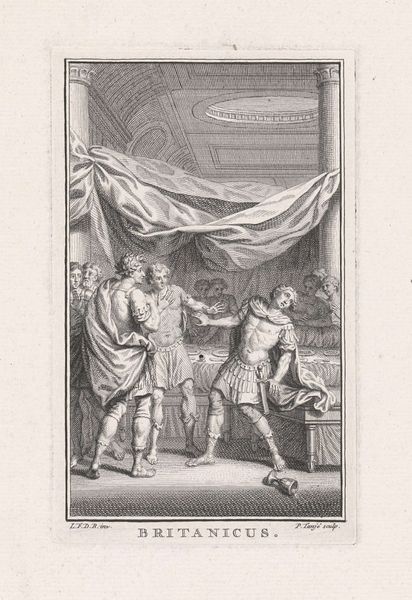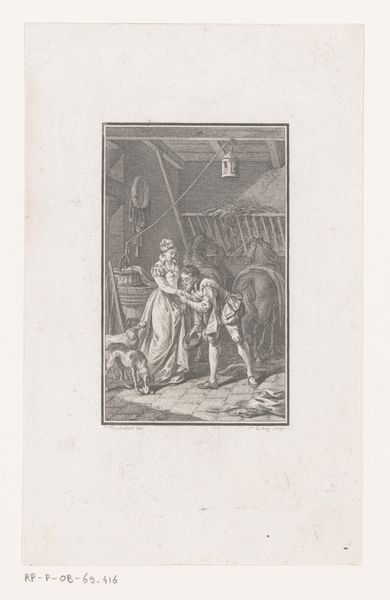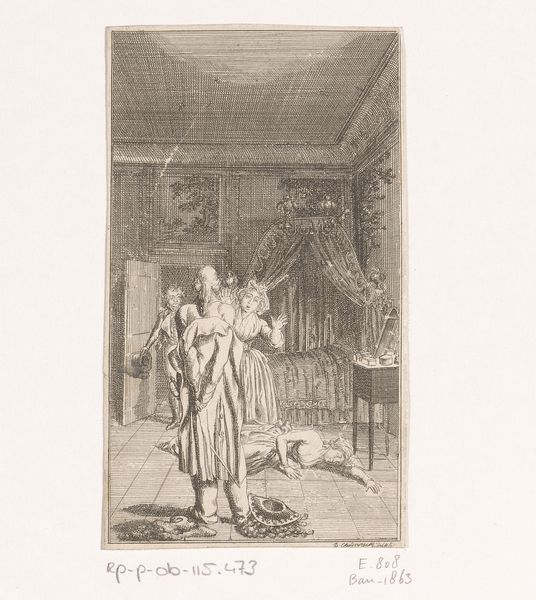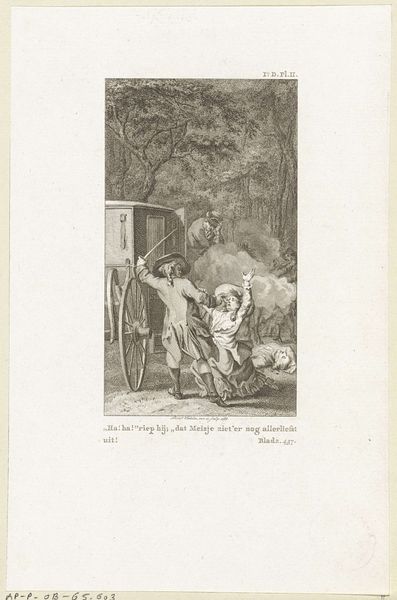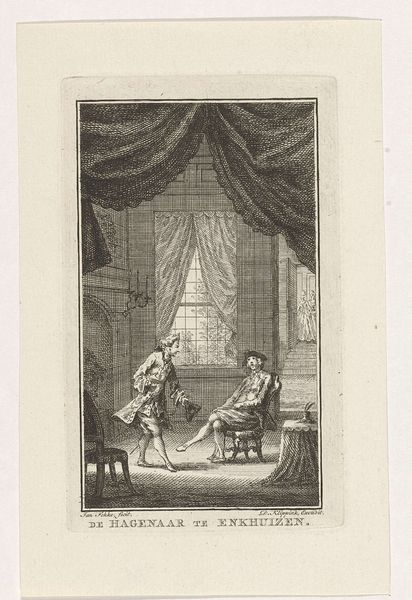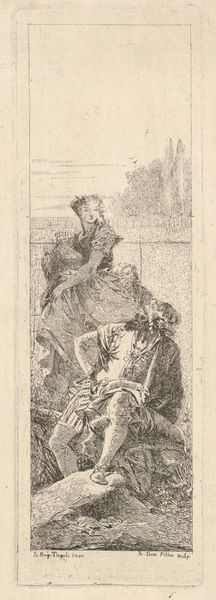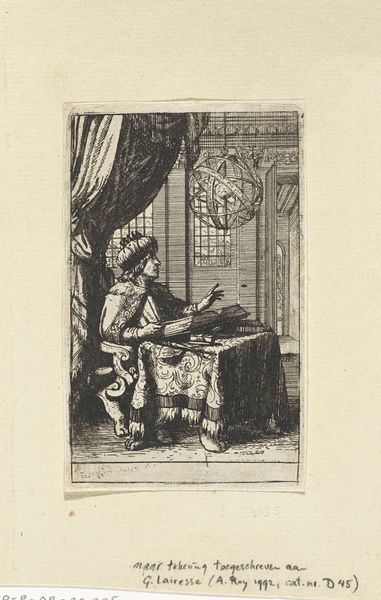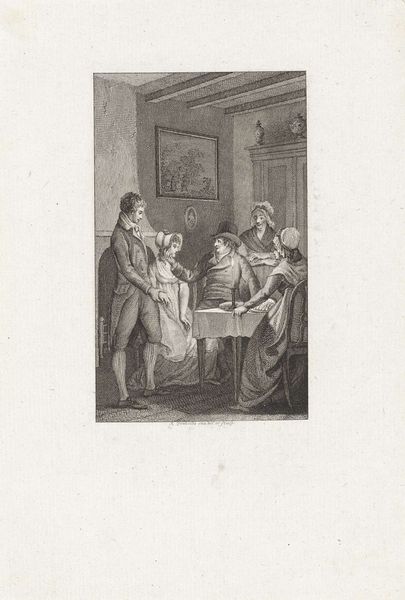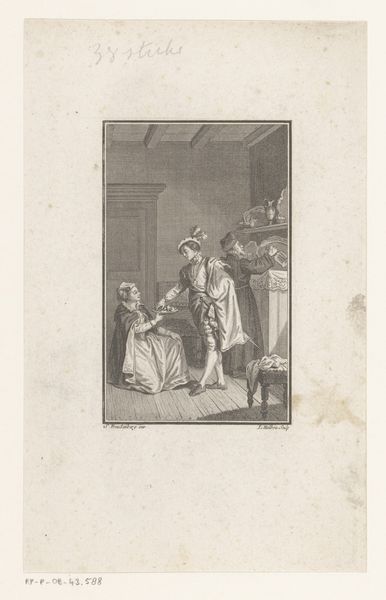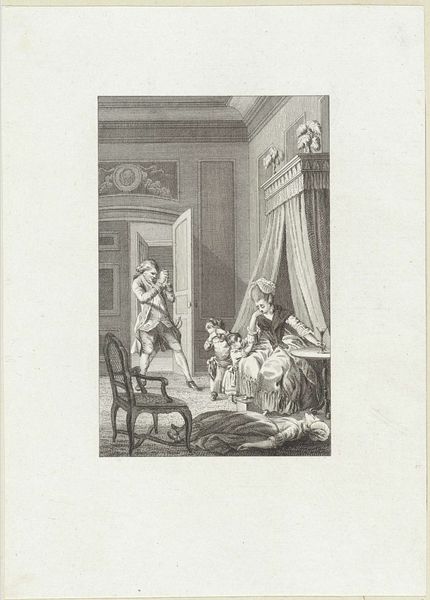
Dimensions: height 156 mm, width 102 mm
Copyright: Rijks Museum: Open Domain
Editor: So, this is "Smidse" by Pieter Willem van Megen, dating from 1760 to 1785. It’s an engraving, etching, and pen drawing all rolled into one! I find the depiction of labor here quite striking. What catches your eye when you look at this piece? Curator: I notice the way van Megen presents labor not just as a means of production, but as a social performance. Consider the setting: this isn't just any blacksmith's shop, but a space imbued with theatricality. Do you see how the figures are arranged, almost as if on a stage? Editor: Yes, it does feel like a scene from a play! The viewer is positioned almost as an audience member. Curator: Precisely! And the central figure, the well-dressed observer, is crucial. What do you make of his presence in this workshop setting? Editor: He seems like an outsider, maybe a patron or someone of higher status visiting the workshop. It highlights the social divisions, doesn't it? He isn't involved in the manual labor, but is rather observing. Curator: Exactly! The image subtly plays on these social dynamics. Notice the attention to detail in the rendering of his clothing compared to that of the workers. It is interesting how these images served as both documentations of daily life and subtle commentaries on the existing social hierarchies. The Rijksmuseum as the gallery housing this today is quite far from this, wouldn't you say? Editor: Absolutely. It's thought-provoking to see how the same image could reflect and reinforce social norms back then and, displayed here now, almost prompts a critical examination of those same structures. Thanks! Curator: Indeed! It reveals how art acts as both a mirror reflecting its time, and a lens through which we can examine the present. A productive reflection, I would say.
Comments
No comments
Be the first to comment and join the conversation on the ultimate creative platform.
